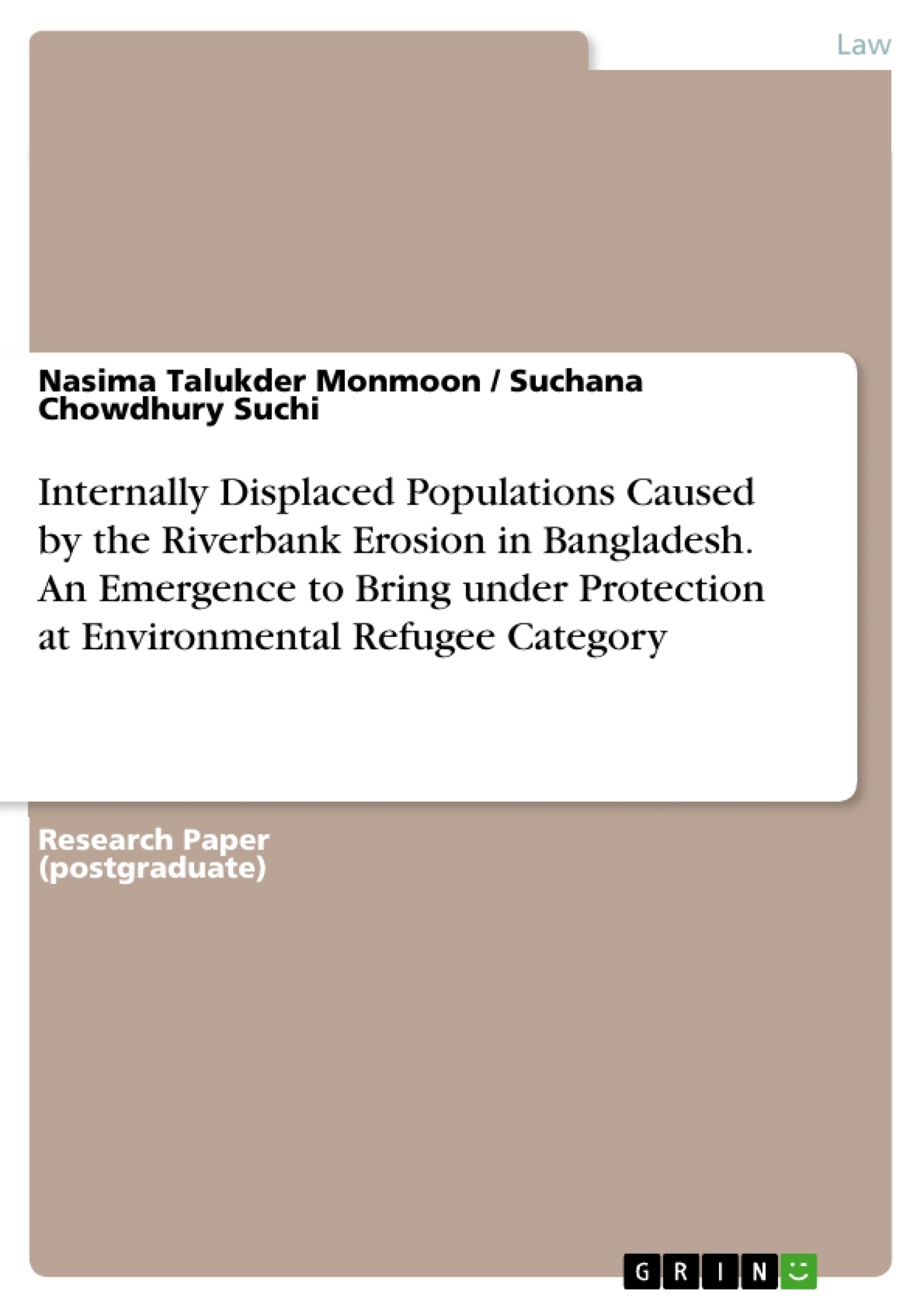The study has aimed to bring a dynamic balance between the national and international policy to protect the displaced people. The study has engaged with normative research methodology mixed with descriptive and critical approach. The outcomes of the study identified those river erosion victims such as the Internally Displaced Populations (IDPs) necessities to treat as environmental migrant as well as to recognise as climate refugee. The study recommends that besides the damage restoration fund, the GHG emitting developed countries have to take the responsibility of climate-displaced population by providing them environmental refugee status.
River erosion is one of the most common crises of Ganges delta from ancient era where Bangladesh has no effective policy or management strategy for the internally displaced populations although there is a successful legislation from eighteen century to protect the property rights of the victims of riverbank erosion. The concurrent terrible features of climate change on Bangladesh pointed to the increasing magnitude of cyclone, drought, erosion, flood, storm and around one-third of the entire land surface of the country would go under water for one metre of sea level rise and almost thirty million people would have in the risk of displacement. Such uncertain features of climate change have incorporated the river erosion displaced populations in the same category of migrants where the intense of the crisis and disaster management strategy has huge gaps.
Inhaltsverzeichnis (Table of Contents)
- Abstract:
- Acronyms:
- Table of Legislation
- Introduction:
- Aims and Objectives of the Study:
- Methodology of the Study:
- Origins of Riverbank Erosion Related Displacement:
-
- Current Impediments:
- Displacement Risk of Bangladesh......
- Socio-economic Perspectives of Displacement:
- Slum Life of Bangladeshi People Displaced by River Erosion:
- National Displacement Protection:
- Good Governance for Displaced People:
- National Long-term Recovery Plan:
- Future of Displaced People and Climate Migrants:
- Unaddressed Area of National Recovery Plan:
- Source of New Lands for Riverbank Erosion Victims:
- Protection under Civil Law of Bangladesh:
- Legislative Barrier & Corruption Nexus:
- International Remedies for Climate Refugee:
- UNFCCC & Kyoto Protocol (KP):
- The Paris Agreement:
- Legal Recognition of IDP & Environmental Refugees:
- Recognition of the Supreme Court of the Netherlands:
- Conclusion & Recommendations:
- Reference List...
- List of Case References.
Zielsetzung und Themenschwerpunkte (Objectives and Key Themes)
The research paper explores the challenges faced by internally displaced populations (IDPs) in Bangladesh due to riverbank erosion, advocating for their recognition as environmental refugees. It aims to analyze the existing national and international policies and identify gaps in their protection. The study recommends a comprehensive approach, integrating national and international policies, to provide adequate protection and support for these vulnerable populations.
- The impact of riverbank erosion on displacement in Bangladesh
- The need for recognition of IDPs as environmental refugees
- The effectiveness of existing national policies in protecting IDPs
- The role of international agreements and legal frameworks in addressing the issue
- The potential for future climate change-induced displacement
Zusammenfassung der Kapitel (Chapter Summaries)
The introductory chapter provides an overview of the issue of riverbank erosion-induced displacement in Bangladesh, highlighting the need for a comprehensive approach to protection. It outlines the aims and objectives of the study, emphasizing the importance of considering the socio-economic consequences of displacement and the need for greater international cooperation. The subsequent chapters delve into the origins and causes of riverbank erosion and its impact on the displaced populations. They analyze existing national policies and explore the challenges in providing adequate protection and support. The paper also examines international legal frameworks and the recognition of climate refugees, concluding with a call for stronger national and international policies to address the issue.
Schlüsselwörter (Keywords)
The research paper focuses on the interconnected issues of climate change, environmental refugees, riverbank erosion, and internally displaced populations in Bangladesh. Key terms and concepts include climate change impacts, displacement risks, legal recognition, international policy frameworks, and the need for a comprehensive approach to protecting vulnerable populations. The paper emphasizes the urgent need for effective strategies and policies to address the growing challenge of climate-induced displacement.
- Quote paper
- Nasima Talukder Monmoon (Author), Suchana Chowdhury Suchi (Author), 2021, Internally Displaced Populations Caused by the Riverbank Erosion in Bangladesh. An Emergence to Bring under Protection at Environmental Refugee Category, Munich, GRIN Verlag, https://www.grin.com/document/1132300



